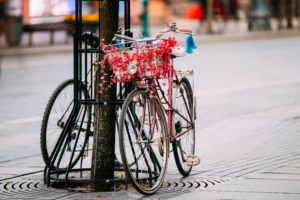Last year, South Florida newspaper The Sun-Sentinel published a guest opinion piece titled “South Florida bike lanes — designed to kill?” by Larry Horist. Like many Florida residents, Mr. Horist is a northern transplant — specifically from Chicago — who’s come to soak in the sun and has some ideas on how residents should ride their bicycles.

The gist of the article is how bicycle lanes are inherently unsafe and lead to more fatalities — a fact he brought from Chicago where this was the case. According to his piece, “We found in Chicago that every new designation of a bike lane near traffic resulted in increases in injury and death — usually to the cyclist”.
Mr. Horist goes as far to conclude the rant by insinuating bicycles are relics of the past, favoring LSV’s (low-speed vehicles) as safer more “modern” options of travel. For 463 words, Mr. Horist paints bicycle lanes as bureaucratically designed death traps for poor, unsuspecting Florida cyclists.
Debunking the myth insinuated by Mr. Hoist will take less than 463 words, I guarantee it.
First and foremost, the assertion of “bicycle lanes are often too narrow” exposes Mr. Hoist’s ignorance of Florida traffic laws. A bicycle lane must be four feet wide on roads with speed limits under 50 mph and 6.5 feet on roads over 50 mph. Both specifications are plenty wide for both streets.
If the street has a bicycle lane the law in Florida states the bicycle rider must use it — this has been the case since 2010. Unless the situation has been deemed “unsafe” like debris blocking the bicycle lane, there is no exception to that rule.
Let’s now address Mr. Horist’s questions “what is the policy and practice when there are not bike paths designated? Are bikes not allowed?”.
First and foremost, let’s go over the “practice and policy” for areas with no designated bike path. On highways, the FDOT travel lane is bicycle accessible with widths of 12 feet and in some cases 14 feet. In rural and some suburban parts of Florida where there is no curb and gutter on the road, FDOT paves the shoulder of the road just so bicycle riders can have a safe place to travel.
The state of Florida allows bicycles on roads and sidewalks — giving bicycle riders total freedom to travel wherever way they want. So long as bicycle riders understand when they’re on the street they’re a vehicle and when they ride on the sidewalk they’re a pedestrian — everyone can travel safely at the same time.
Speaking of which, Mr. Hoist’s proposed solution to the bicycle lane problem is to build a “third avenue” infrastructure. An idea is to spend Florida state tax dollars building a separate set of roads for hoverboards, Segways and golf carts. Those dollars could be better spent improving our current infrastructure so all Florida travelers can drive safer roads.
Instead of “pedal power” conceding to “horsepower” — let’s use the guidelines and safety regulations we have to allow pedal power and horsepower to coexist in harmony.
Well, would you look at that? I only needed 354 words to inform the public on their Florida bicycle lane laws.

